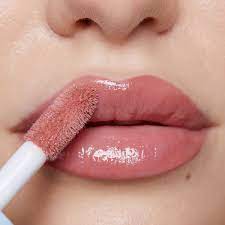
A PESTEL analysis examines the external macro-environmental factors that can impact an industry or business. Here’s a PESTEL analysis of the lip gloss industry:
- Political Factors:
- Regulations and Policies: Government regulations regarding cosmetics manufacturing, labeling, and ingredients can affect the production and marketing of lip gloss products.
- Trade Policies: Trade agreements, tariffs, and trade barriers can influence the import/export of lip gloss ingredients and finished products.
- Political Stability: Political instability in key manufacturing or market regions can disrupt supply chains and business operations.
- Economic Factors:
- Economic Conditions: The overall economic health, including factors like GDP growth, inflation rates, and consumer spending, can impact the demand for discretionary items like lip gloss.
- Disposable Income: Levels of disposable income affect consumers’ ability to purchase non-essential items like cosmetics.
- Exchange Rates: Fluctuations in currency exchange rates can affect the cost of importing/exporting lip gloss ingredients and products.
- Social Factors:
- Consumer Preferences: Trends in beauty and cosmetics, including preferences for natural or organic ingredients, cruelty-free products, and specific colors or finishes, influence lip gloss sales.
- Demographic Shifts: Changing demographics, such as aging populations or increasing diversity, can influence consumer preferences and purchasing behavior.
- Cultural Influences: Cultural norms and beauty standards in different regions may impact the demand for lip gloss and the types of products preferred.
- Technological Factors:
- Product Innovation: Advancements in cosmetic technology, such as new formulations, applicators, or packaging designs, drive innovation in the lip gloss industry.
- Digital Marketing: The use of digital platforms and social media for marketing and e-commerce affects how lip gloss brands reach and engage with consumers.
- Manufacturing Processes: Automation and improvements in manufacturing processes can lead to cost efficiencies and faster product development in the lip gloss industry.
- Environmental Factors:
- Sustainability: Increasing consumer awareness of environmental issues prompts demand for eco-friendly and sustainable lip gloss products and packaging.
- Environmental Regulations: Regulations related to waste management, recycling, and environmental impact assessments affect manufacturing practices and product development.
- Climate Change: Climate-related events and concerns about environmental sustainability can influence consumer behavior and preferences in the lip gloss industry.
- Legal Factors:
- Product Safety Regulations: Compliance with regulations related to product safety, labeling, and testing is essential for lip gloss manufacturers to ensure consumer safety and regulatory compliance.
- Intellectual Property Rights: Protection of trademarks, patents, and copyrights is important for preventing infringement and maintaining brand identity in the competitive lip gloss market.
- Advertising and Marketing Laws: Compliance with laws and regulations governing advertising, including truth in advertising and marketing to minors, affects how lip gloss brands promote their products.
By analyzing these factors, lip gloss manufacturers and marketers can better understand the external environment and adapt their strategies to capitalize on opportunities and mitigate risks within the industry.